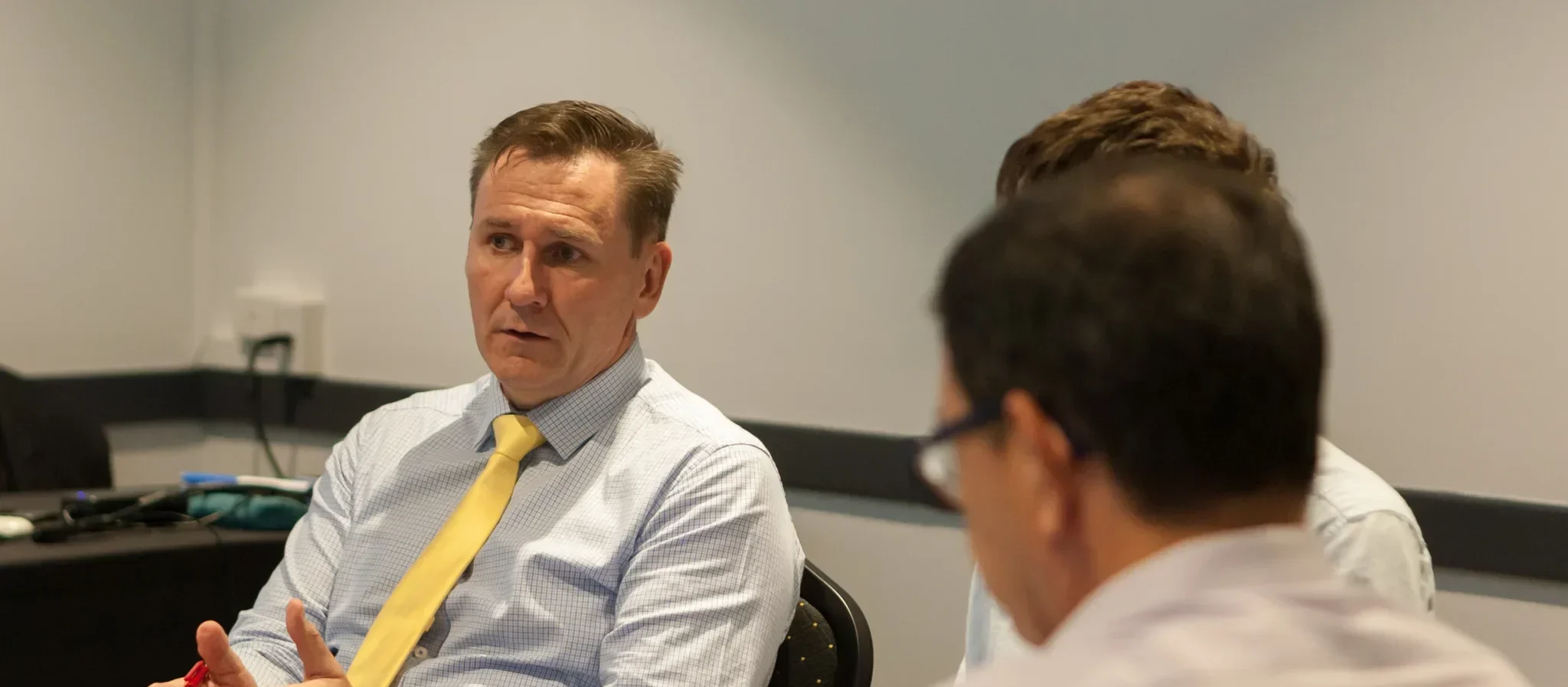Welcome to the first in our series of Q&A sessions with our expert trainers, starting with none other than Micheal Martin, our highly respected Integrated Management Systems (IMS) Lead Auditor trainer. Micheal’s deep understanding of Integrated Management Systems and his dedication to excellence have made him a sought-after trainer and auditor in the field.
In this Q&A, you’ll gain valuable insights from Micheal on the importance of ISO Management Systems, the benefits and misconceptions of ISO Certification, and auditing processes and challenges.
Be sure to check out the Part 2 of the Q&A on Micheal’s website, where he dives into topics about professional development, challenges and resistance, staying current, and job satisfaction.
RTP: Can you explain what ISO management systems are and why they are important?
Micheal: ISO enables an organisation to align to a common idea that those in your industry or service have so you can react and respond to opportunities more easily. ISO standards are generally the benchmark that an organisation can follow to achieve more consistent outputs sooner, at a lower cost.
RTP: How do ISO standards contribute to an organisation’s overall performance?
Micheal: The standards help organisations to develop a way of working that is more consistent and, over time, a process that is more efficient. With leadership and commitment, ISO brings the responsible people together at planned intervals to understand where the strengths and weaknesses are so action can take place.
RTP: What are the most common misconceptions about ISO certification?
Micheal: Here are a few things people have said to me:
- “That the cost outweighs the benefit”.
This may be the case initially, as in any change, but the savings and consistency over time creates efficiency, confidence and a more agile organisation.
- “That the government will find out if we have gaps”.
Any gaps identified will come with an appropriate action plan to address the gap. If a regulator did come calling your action plan is evidence of doing the right thing and will usually be met with approval.
- “There are already too many systems, and we do not need another one”.
Too many systems is often a sign of a disorganised way of working in an organisation. If I get this response it is usually a sign of frustration from top management as they are not sure about the benefits of an integrated approach.
RTP: How does the high-level/harmonised structure of an integrated management system benefit organisations and their leadership?
Micheal: The ten-part high-level structure means that with relatively minor effort integration is readily achieved. This brings savings in time effort and greater levels of assurance as practitioners from different disciplines, such as safety, environment and quality all have a common way of working in an integrated approach.
An integrated approach enables senior leaders, such as executives and others, to participate more fully in the setting of objectives, provision of resources and the overall reviews of the management system. When top management are able to more fully participate the organisation gains a reputation of reliability and consistency that reduces surprises and adds value.
RTP: What are the most common issues you find during ISO audits?
Micheal:
- A last-minute change in the plan.
- Not finding sufficient evidence of a process being carried out.
- Access to records as key people have changed or the records may have been moved or archived.
RTP: How do you approach auditing an organisation with no prior ISO certification?
Micheal: We start with a conversation about why they are thinking of getting certified and what their main areas of concern are. This will shape the development of the audit plan and timetable.
I will often ask Top Management to name their competitors, and we will review the certification of each competitor to see what they do. This is easy through the JASANZ register. From there I ask them to create a list of every documented process, policy, form, checklist, etc., so we can sit down and get a sense of whether they need help to build a system or whether they are ready for a stage one audit.
RTP: Can you describe a particularly challenging audit and how you handled it?
Micheal: Being treated like a regulator does not benefit either party.
In this example, some managers were withholding information and attempting to manage me away from risk. I asked the Top Manager responsible to attend a midday debrief and asked them, in front of the management team, what they wanted from me and from their team. The head of the business clearly reinforced that I was there to help and that “managing the auditor” was outdated and detrimental to our aim. Things got better from there.
RTP: What advice would you give to an organisation preparing for its first ISO audit?
Micheal: Generally, practitioners want to succeed and get stressed if there is a gap or opportunity for improvement. Do not take findings personally, this is a good thing as you have identified a potential delay to certification. This creates an emotional response when a gap is identified.
RTP: How do you ensure impartiality and objectivity during an audit?
Micheal: Firstly, determine whether you are the right person to conduct the audit. You may have developed the system so best to step back and let another auditor do the work.
Once the audit begins, ensure that the way you start out is the way you continue. The size and selection of the sample, checking the extent to which process is documented, whether the information is correct, content is complete, and controlled documents are current. I also avoid getting to know too much about the person I am with to reduce the risk of becoming too familiar or too familiar as this can create bias toward the individual on a personal level.
RTP: How can ISO 45001 (Occupational Health and Safety) improve workplace safety?
Micheal: There are some significant cross overs with other standards which create an opportunity to build understanding and integrated ownership throughout management. The standard also highlights where and when workers need to participate and when the organisation needs to consult.
Thank you for to Micheal for his time and participation in our Q&A series. We’ll be featuring more of our talented trainers in upcoming Q&A articles, providing you with a wealth of knowledge from leaders in the field. Be sure to visit Micheal’s website for the part 2 of his interview and keep an eye on our website for the next instalment in this series. We’re committed to bringing you the best in training and professional development.


